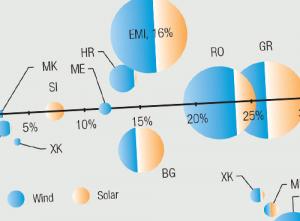How to Get There
Elliot Roseman is Program Director for the Electricity Market Initiative for the U.S. Energy Association.
In December 2019, the transmission system operators (TSOs) and market operators of the power systems in Southeast Europe (SEE) posed an important question: Can we reliably determine and anticipate the market, grid, and emissions impacts of seeking to add and absorb substantial utility-scale renewable energy sources (RES) through 2030? Are we ready for this huge wave, if not tsunami?

While simple to ask, the answer was far from obvious, since the tripling or quadrupling of RES anticipated could well strain individual network elements, depending on the RES project locations, and thus revamp their grid planning.
Further, this change would be taking place at the same time that these companies were integrating their markets with all countries in the region (a huge shift as well), with the potential for market price fluctuations.
And what about climate change? They were simultaneously seeking to chart a pathway to meet the EU's aggressive carbon dioxide emissions reductions targets, such as the Clean Energy Package and forty percent emissions reduction, while implementing carbon markets.

